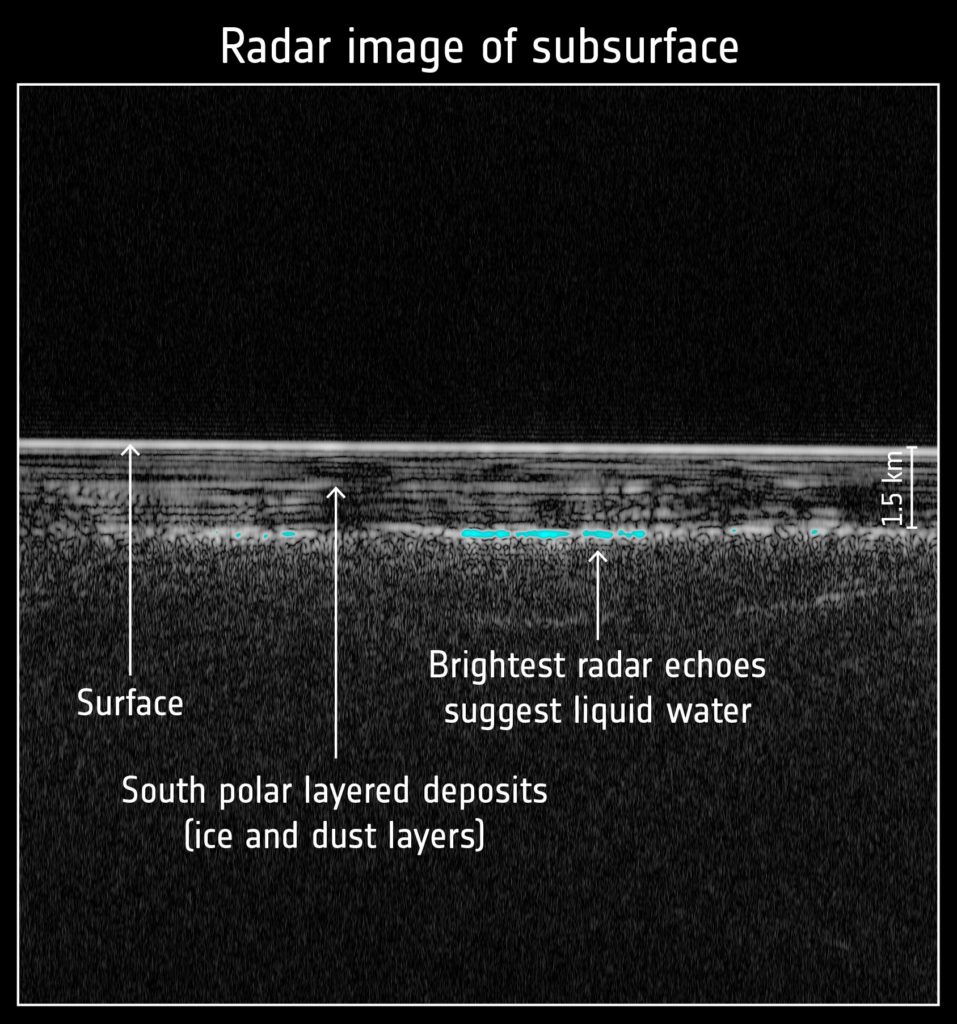Radar data collected by ESA’s Mars Express point to a pond of liquid water buried under layers of ice and dust in the south polar region of Mars.
Evidence for the Red Planet’s watery past is prevalent across its surface in the form of vast dried-out river valley networks and gigantic outflow channels clearly imaged by orbiting spacecraft. Orbiters, together with landers and rovers exploring the martian surface, also discovered minerals that can only form in the presence of liquid water.
But the climate has changed significantly over the course of the planet’s 4.6 billion year history and liquid water cannot exist on the surface today, so scientists are looking underground. Early results from the 15-year old Mars Express spacecraft already found that water-ice exists at the planet’s poles and is also buried in layers interspersed with dust.
The presence of liquid water at the base of the polar ice caps has long been suspected; after all, from studies on Earth, it is well known that the melting point of water decreases under the pressure of an overlying glacier. Moreover, the presence of salts on Mars could further reduce the melting point of water and keep the water liquid even at below-freezing temperatures.
But until now evidence from the Mars Advanced Radar for Subsurface and Ionosphere Sounding instrument, MARSIS, the first radar sounder ever to orbit another planet, remained inconclusive.
It has taken the persistence of scientists working with this subsurface-probing instrument to develop new techniques in order to collect as much high-resolution data as possible to confirm their exciting conclusion.


